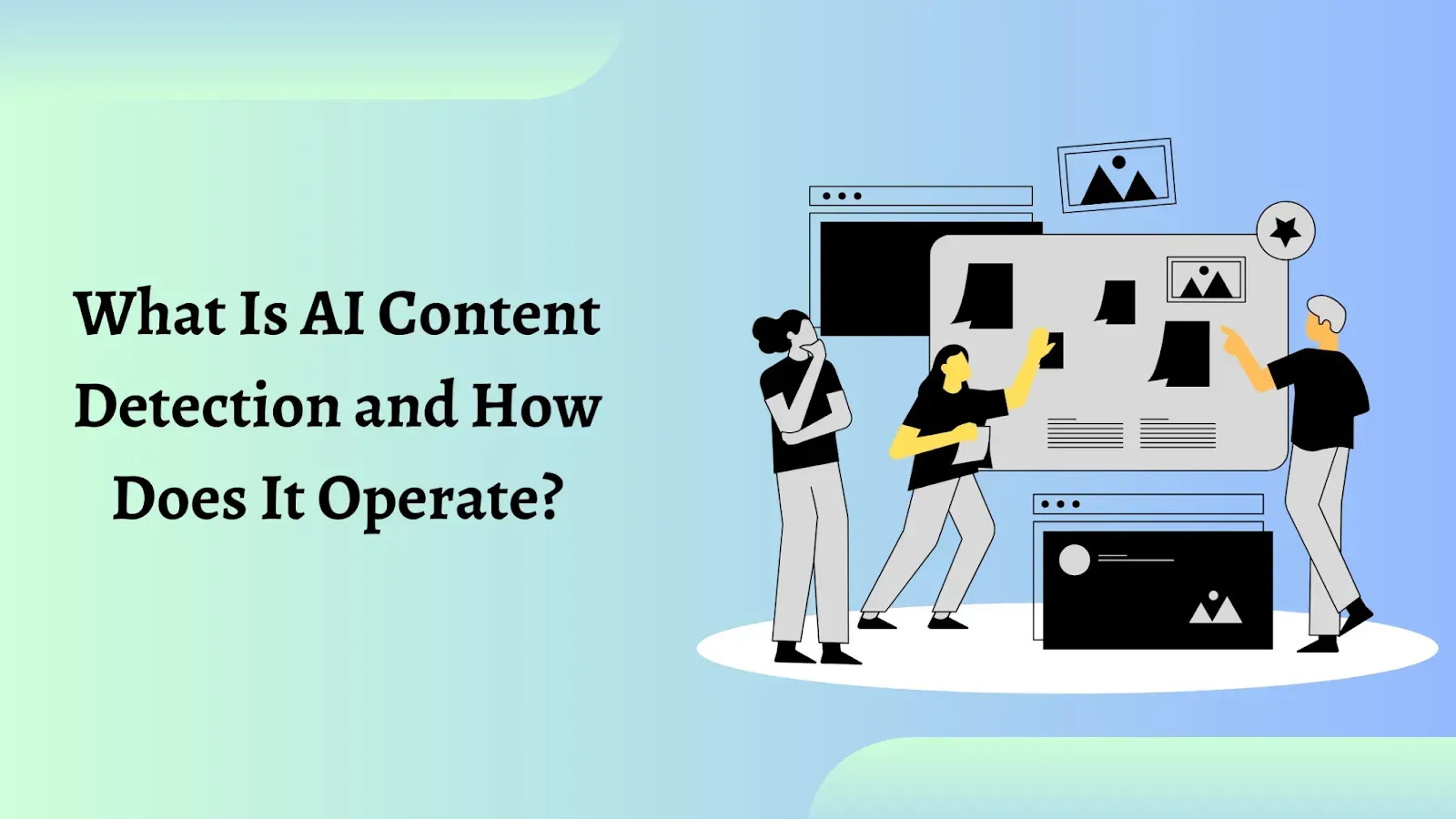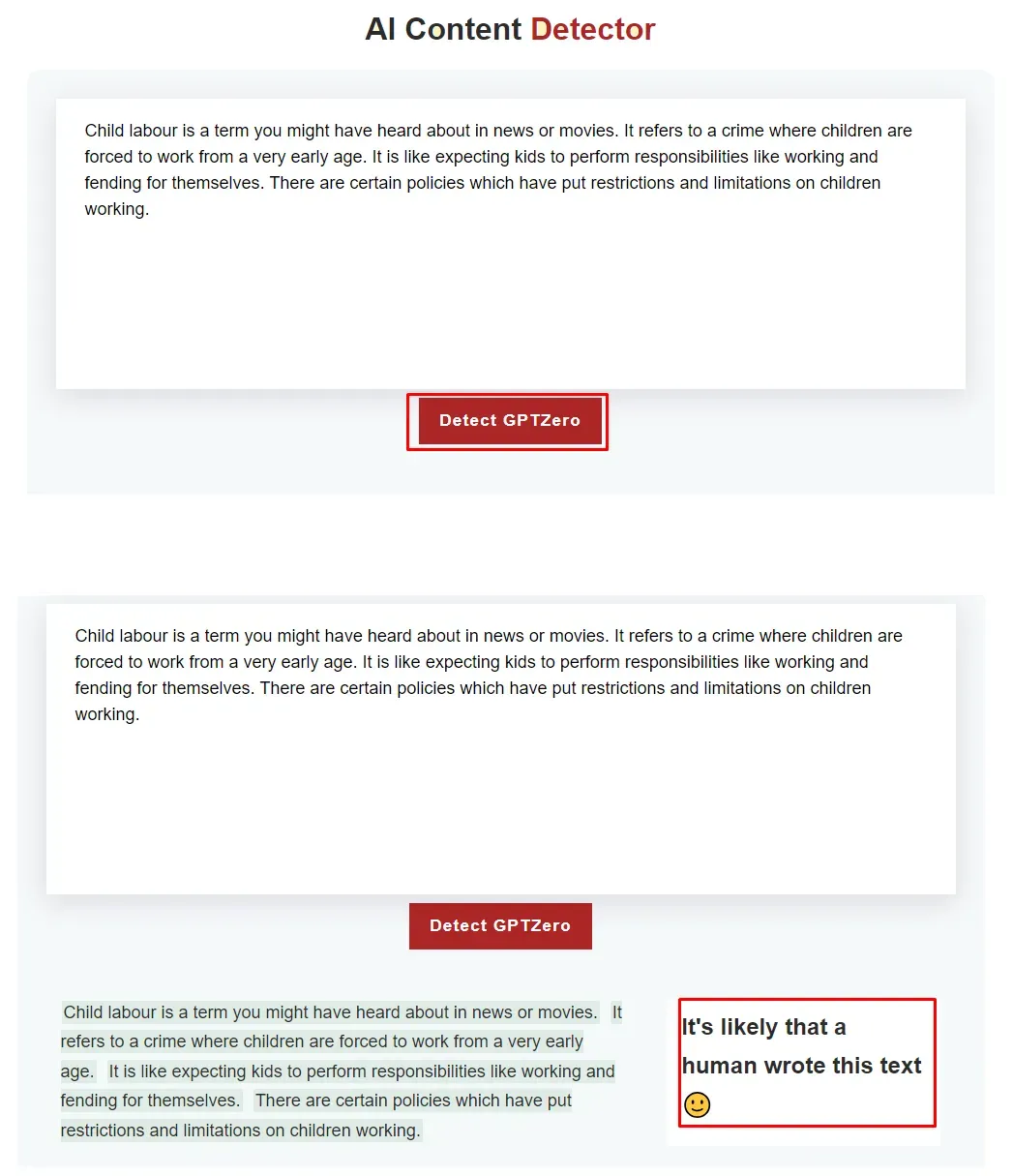
These AI tools are smart enough to detect the robotic content within a matter of seconds and not all and always, but collectively these tools deliver authentic and reliable results.
The demand for AI Content Detector tools is rising in various fields of life including academics, journalism, content marketing, etc. In this article, we will learn in detail about AI content Detection and how it works.
What is AI-Generated Content?
AI-generated content refers to any form of content, such as text, images, audio, and videos, that is created using Artificial Intelligence tools.
Opposite to the content written or created by humans, AI tools take advantage of the vast amounts of existing data and rewrite it by changing sentence structure and adding synonyms.
The generated content is unique, plagiarism-free, and does not cause copyright issues if properly used. It saves businesses and writers time, effort, and money at the same time.
What is AI Content Detection & How it Works?
AI Content Detection is a cutting-edge technology that uses Artificial Intelligence to identify and categorize various types of content (text, images, audio, etc.). It operates through a combination of advanced algorithms and machine-learning techniques.
The process begins by feeding the AI system with a massive dataset of labeled content, allowing it to learn patterns and characteristics.
As the AI model is trained, it becomes increasingly proficient at recognizing similar patterns in new, unlabeled data.
When content is uploaded or shared online, the AI content detection system swiftly analyzes it by comparing it to its vast knowledge base.
This technology is widely used for:
- Content moderation on social media platforms
- Filtering out inappropriate or abusive content
- Cybersecurity to detect potential threats hidden within digital materials
Distinguish between AI and Human-Written Content
AI Content Detector equipped with advanced machine learning and natural language processing programs. These programs enable these AI tools to get smarter with each query they execute and understand human language respectively.

These AI tools play a crucial role in distinguishing between AI-generated and human-written content as shown below:
These content detectors utilize sophisticated algorithms and machine learning techniques to analyze text, discerning patterns, language nuances, and contextual cues in detecting AI-generated content.
As a result, transparency and trustworthiness in online communication can be ensured. It ultimately helps users to make informed decisions about the authenticity of the information they encounter.
Applications of AI Content Detection
The following practical applications of AI content detection showcase its potential to revolutionize various industries, making processes more efficient, secure, and user-friendly.
Content Moderation:
AI content detection is widely used by social media platforms, forums, and content-sharing websites.
It serves to automatically filter and remove inappropriate, harmful, or offensive content. This helps maintain a safer and more inclusive online environment for users.
Cybersecurity:
It plays a crucial role in identifying and mitigating cyber threats. By analyzing emails, messages, and attachments, it filters out phishing attempts, malware, and suspicious activities. Indirectly, it is helping organizations protect their networks and data from potential breaches.
Copyright Infringement Detection:
To ensure intellectual property rights for businesses and organizations, AI content detection is used to scan digital content for copyrighted material.
Brand Safety and Ad Verification:
Advertisers and marketers use AI technology to ensure that their ads appear in brand-safe environments.
It helps brands verify that their ads are free from inappropriate or controversial content and displayed as intended and reach the right target audience.
Document Analysis and Categorization:
AI content detection can analyze and categorize vast amounts of textual information. This kind of information can be utilized in legal document processing, content indexing, and information retrieval.
Real-time Translation and Transcription:
AI technology enables real-time translation of text or speech in different languages. This feature is valuable for communication, and transcription services; enhancing accessibility for individuals with language barriers.
Sentiment Analysis:
By analyzing text and social media posts, AI content detection can determine the sentiment of users toward specific topics, products, or services.
This information is useful for businesses to gauge public opinions, improve customer experiences, and make data-driven decisions.
Summary
Undoubtedly, AI content detection stands at the forefront of digital innovation, revolutionizing the way we interact with vast volumes of information.
AI Content Detector’s seamless integration with ML algorithms and neural networks allows it to swiftly analyze diverse content types, such as text, images, and videos.
Thus, leveraging the power of AI, content detection systems can identify patterns, detect anomalies, and categorize data with remarkable precision.